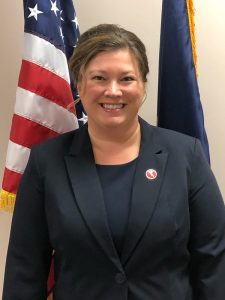Kentucky Joins Jurisdictions Leading Implementation of the Family First Prevention Services Act

The state of Kentucky is the latest jurisdiction to have its Family First Prevention Plan approved by the Children’s Bureau at the U.S. Department of Health and Human Services. Kentucky joins a small group of child welfare jurisdictions—four states and the District of Columbia–that are leading implementation of this key provision of the Family First Prevention Services Act.
“Transformational opportunities are rare in child welfare,” said Chapin Hall Executive Director Bryan Samuels, who previously served as the Commissioner of the Administration for Children, Youth and Families, which oversees the Children’s Bureau. “The Family First Prevention Services Act is a transformational opportunity – it gives us the resources and support to serve more children in their homes and communities while safely reducing reliance on foster care.”
In addition to Kentucky, Chapin Hall also worked with Washington, DC and Maryland to craft plans that were among the first five to be approved. (Learn more about Chapin Hall’s Family First framework and tools.)

“We would not be where we are in Kentucky without Chapin Hall’s expertise and guidance with Family First implementation,” said Jessica Brown of Kentucky’s Department for Community Based Services. “When we were first starting out, everything was unpaved. There was no guidance and very limited information about how to plan for and implement the law. What Chapin Hall helped us understand was that this wasn’t a compliance exercise. Chapin Hall helped us clarify our values and goals within the agency and determine how to use Family First as a lever to reach those goals.”
Clare Anderson, a policy fellow and key leader of this work for Chapin Hall, explains that the approved Prevention Plan is the first step to safely reduce reliance on foster and congregate care settings. “The plan shows how a system will use evidence-based prevention services to keep children with their families,” said Anderson. “Prevention plans demonstrate how child welfare systems intend to reach and provide services to specific populations of families at risk of entering the child welfare system.”
A federal funding source that previously could only be used for children already in care can now be used by states for these prevention services.
In the planning process, Chapin Hall works with each jurisdiction to clarify its strategic direction, plan and implement stakeholder engagement, analyze data, and conduct provider surveys. All of these steps shape the final Prevention Plan. Chapin Hall also works with jurisdictions on implementation and evaluation.
For more information about this work, contact Clare Anderson, Miranda Lynch, or Krista Thomas.
 Thank you for your interest in Chapin Hall’s research. Please share some information to access this file.
Thank you for your interest in Chapin Hall’s research. Please share some information to access this file.